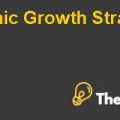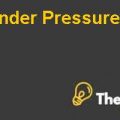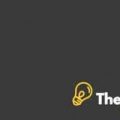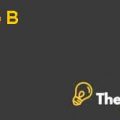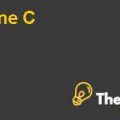Zara Fast Fashion Case Study Solution
A. The distinctive features of Zara’s business model
| Supply Chain Performance Measures | Zara | Industry Average/Traditional Retailers/Key competitors |
| Design-to-shelf lead time for new or modified product | New designs take Four to Five weeks and modification takes around 2 weeks | Design by Traditional retailer takes around up to 6 months whereas, key competitors such as manufacturers take almost 3 months |
| In-house production after the season starts | It takes around 85% by taking around 35% for design and raw material purchases and outsourcing of finished goods of around 40 to 50% | Traditional Retailers take around 0 to 20% on average for designing and manufacturing along with marketing and sales. |
| Product variety (# of distinctive items) | Company has introduced around 11000 distinct items by offering in different SKUs | Key competitors were able to offer only 2000-4000 items of distinct nature |
| Average annual customer visit | Average annual customer visits to Zara store is around 17 times on average | Average annual customer visits to other retailers is around 4 times on average. |
| % of revenue spent on advertising | Media Advertising spending of Zara is around 0.3% of its revenue. | Media Advertising spending of most specialty stores is around 3 to 4% of its revenue. |
B. Benefits of small-batch, in-house, in-season production:
- Zara is able to be flexible enough to change its production with the changing trends of fashion.
- Zara can provide a variety of products with new designs quickly
- Zara can minimize its inventory cost by producing small batches which will not result in higher holding cost for the company
- It will also result in more effective, faster, efficient and time saving process for both company as well as for its customers.
- It will make the value chain activities effective by close coordination due to vertical integration of all the departments
C. Challenges of small-batch, in-house, in-season production:
- This may increase the ordering, fuel and transportation costs of the company by quickly changing the designs and asking for raw materials quickly
- It may result in financial disturbance for the company if there is change in exchange rates for delivering the goods abroad
- They may face the challenges by reduced prices and high media advertising from its competitors which may result in the lower profit margins for the company
- ZARA FAST FASHION Harvard Case Solution & Analysis
- ZARA FAST FASHION Harvard Case Solution & Analysis
D. Threats resulting in Failure for Zara:
- International expansion of Zara results in its inability to compete with its competitors by developing in America, a strong and effective supply chain. They have poor distribution facility and strong internal production.
- Due to the changing consumer preferences, Zara is facing a possible threat of dis-economies of scale by providing a limited and standardized product line in limited geographical areas. This results in providing competitive prices and distinct feature of providing short lead time products
- Zara faces a very close and strong competition from H & M who provides customized products according to the changing consumer preferences.
- Due to the central logistic model of the Zara, it would be very difficult for other apparel retailers to adopt the model of Zara because it will be very costly and it would result in failure of the company to diversify its business in other foreign territories................
This is just a sample partial case solution. Please place the order on the website to order your own originally done case solution.

